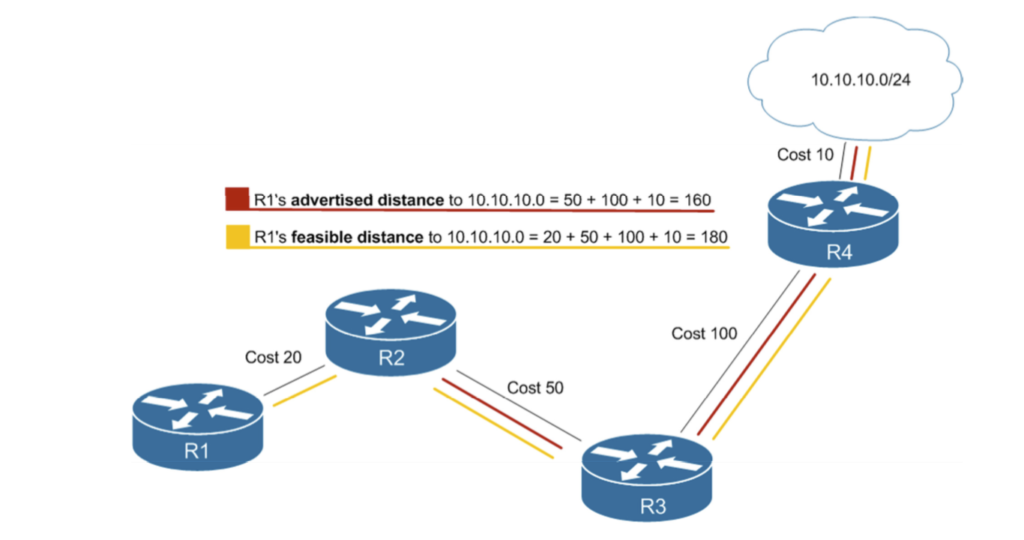EIGRP Characteristics
Fast Convergence
EIGRP uses the DUAL algorithm to converge very quickly. It does this by knowing neighbor router’s routing tables and predefining primary and secondary routes to every destination network.
Multicast
EIGRP sends route updates, hellos, and queries to its neighbours using the multicast address 224.0.0.10 so end hosts are not affected. Hellos are sent out every 5 seconds by default to learn about new and make sure existing neighbours are still available.
Triggered Updates
EIGRP uses partial triggered updates to its directly connected neighbours rather than periodically sharing its entire routing table. This saves link bandwidth because updates are only sent if a change is incurred, only the changes are sent in the update, and lastly – the updates are only sent to a routers’ affected neighbors. Very efficient!
VLSM
Variable length subnet masking is supported by EIGRP because it is a classless routing protocol. That means subnet masks are included in route updates.
Protocol Independent
Enhanced Interior Gateway Routing Protocol supports more than just IPv4. It supports IPv4, IPv6, IPX, and AppleTalk.
Terminology
Feasible and advertised distance
EIGRP’s DUAL algorithm determines the best route to a particular network by using distance information, known as cost or metric. DUAL determines the lowest cost path by adding up the cost to the destination network. Neighbors exchange the cost to every route they know of when a neighbor adjacency is formed. A router then uses that information to calculate their own cost to the same network by adding the cost between themselves and their neighbour, then adding that to the neighbour’s advertised cost.
So, (the cost between neighbors) + (the neighbor’s cost to the destination network) = the total cost to the remote network, or the feasible distance. The cost the neighbor advertised to the remote network is known as the advertised distance. See the diagram below.
Successor
Think of the successor as the active, or primary, route to a destination for EIGRP. The successor is actually the neighbor router that has the least-cost path to a destination network (a.k.a. has the lowest feasible distance). Successor routes are added directly to the routing table. You should also know that multiple successors can exist if they have identical feasible distance values.
Feasible Successor
This is more like the backup route EIGRP chooses to a destination network. The feasible successor feature is what makes EIGRP convergence so unique and so fast. It always tries to find a backup route. In the event that the successor fails, it can immediately switch over to the feasible successor (backup) route with very little delay. To qualify as a feasible successor, the AD must be less than the successor’s FD. This helps ensure a loop-free layer 3 path.


Pingback: Cisco’s Network Security: Protecting Your Business from Cyber Threats – clifford network
Pingback: Cisco Network Certification: Boost Your Career – clifford network